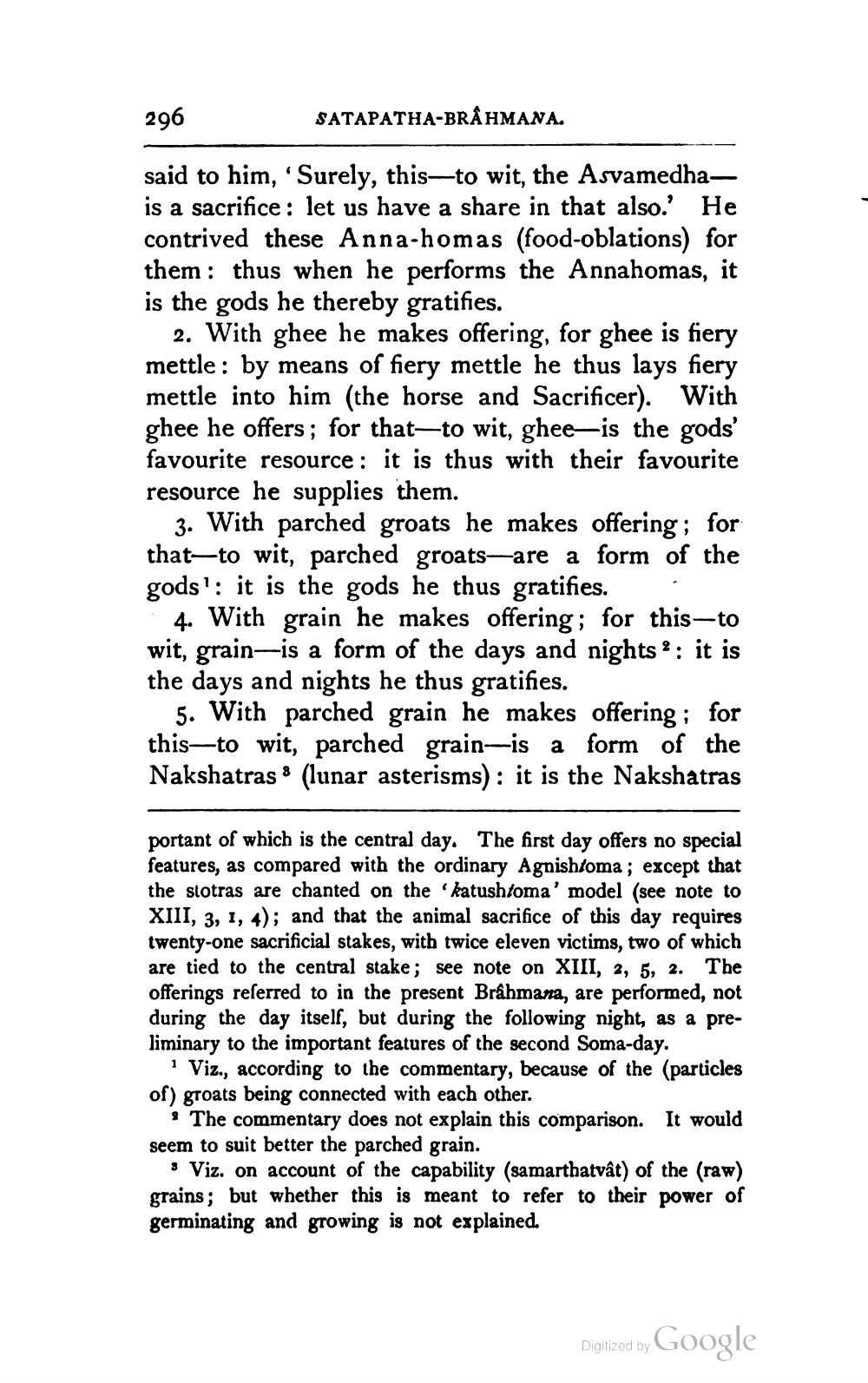________________
296
SATAPATHA-BRÂHMANA.
said to him, 'Surely, this—to wit, the Asvamedhais a sacrifice: let us have a share in that also. He contrived these Anna-homas (food-oblations) for them: thus when he performs the Annahomas, it is the gods he thereby gratifies.
2. With ghee he makes offering, for ghee is fiery mettle: by means of fiery mettle he thus lays fiery mettle into him (the horse and Sacrificer). With ghee he offers; for that—to wit, ghee—is the gods' favourite resource: it is thus with their favourite resource he supplies them.
3. With parched groats he makes offering; for that to wit, parched groats—are a form of the gods': it is the gods he thus gratifies. .
4. With grain he makes offering; for this-to wit, grain-is a form of the days and nights 2 : it is the days and nights he thus gratifies.
5. With parched grain he makes offering; for this—to wit, parched grain-is a form of the Nakshatras 8 (lunar asterisms): it is the Nakshatras
portant of which is the central day. The first day offers no special features, as compared with the ordinary Agnishtoma; except that the stotras are chanted on the katushtoma' model (see note to XIII, 3, 1, 4); and that the animal sacrifice of this day requires twenty-one sacrificial stakes, with twice eleven victims, two of which are tied to the central stake; see note on XIII, 2, 5, 2. The offerings referred to in the present Brahmana, are performed, not during the day itself, but during the following night, as a preliminary to the important features of the second Soma-day.
Viz., according to the commentary, because of the (particles of) groats being connected with each other.
. The commentary does not explain this comparison. It would seem to suit better the parched grain.
3 Viz. on account of the capability (samarthatvät) of the (raw) grains ; but whether this is meant to refer to their power of germinating and growing is not explained.
Digitized by Google




